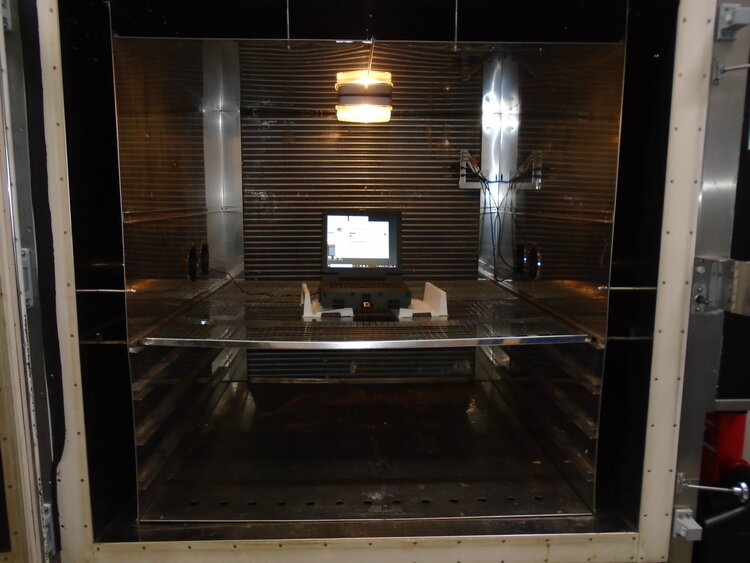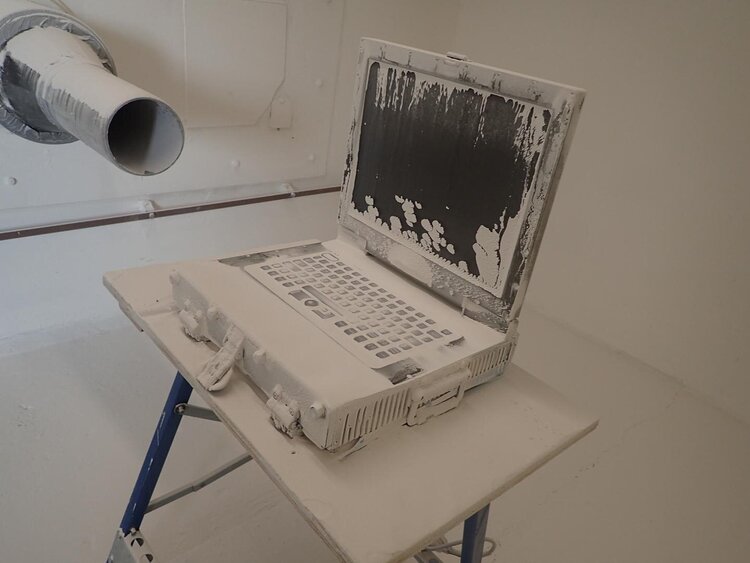Humidity – Humidity tests are carried out to make sure that a humid environment does not affect the product. We ensure that water cannot form within the product or hardware when it is used in humid climates. This test is carried out in a specialised humidity chamber that can change the environment and increase or decrease the humidity based on the requirements. We test GRiD products to 95% humidity which allows us to be confident that no matter the environment or the humidity within it, our products will work as they are supposed to.
Salt Fog – The Salt Fog (or Salt Spray) test is a standardized and popular corrosion test method, used to check corrosion resistance of materials and surface coatings. This test is one of the more severe tests and is carried out by blasting the product with a salt spray mixture for a pre-defined period of time (with more stringent requirements going for longer periods of time).
Solar Radiation – Solar Radiation (or Sunshine) testing is a unique test with a very limited number of Test Houses able to provide this service. Solar Radiation testing is performed to check how products will react to photo-chemical effects of ultraviolet light, or in simple terms, how the product will react to prolonged periods of sunlight. This is done for two reasons; firstly, to see if or how the exterior of a product will be affected by prolonged sunlight (think how the sun fades the colour of walls/paintings etc. over time) and secondly, combined with operating temperature testing, to check how the product operates when exposed to high temperatures.
Contaminants – Contaminants testing is carried out to assess how a product reacts to a variety of chemicals and liquids or even gases. This test ensures that there are no unwanted reactions or issues that appear should a product be exposed to a particular chemical. We ensure that all materials used withstand these contaminants and that the products are fully sealed. It is not just the effects of dangerous chemicals or jet fuel that is assessed, we are often asked to test against Coca-Cola damage!
Mould/Fungal Growth – Fungal and Mould growth tests are carried out to make sure that any coatings or materials used are not going to suffer from fungal growth when they are taken out into the field and stored in potentially damp conditions. For instance, as we have customers that are within the naval industry we have to make sure that none of the materials we use to build our products will suffer from mould when stored in ships.
Vibration Testing – Vibration testing is carried out to test the quality of the product and make sure that it is able to stand up to its intended use without coming apart or suffering defects that would stop it from working. This testing is carried out in a number of different ways, depending on the specific requirements. Vibration levels vary depending on the environment the product is used within. The vibration profile of a Helicopter varies to that of a product mounted to a tracked vehicle or within a fixed-wing aircraft.
Shock Testing – Similar to vibration, shock testing tests the ability for products to deal with any sudden shocks that the product might receive. The tests for shock are typically done in the following 3 tests;
- Shock testing by a rapid application of G-forces to ensure that the product can withstand rapid acceleration when needed.
- Shock, drop and topple testing which simulates products in use, this is done to make sure that products used out in the field will be able to withstand accidental drops or knocks when in use.
- Drop testing where a product is dropped from a height of 1.25m, 26 times on each face, side and corner. This is because, over the typical lifetime of a hand-held product, it is expected that it will be dropped a total of approximately 5 times. This test allows you to change the product up to 5 times during the 26 drops. We recently took our GRiDCASE 2530 through this test, using the same unit for each of the 26 drops and passed successfully!



